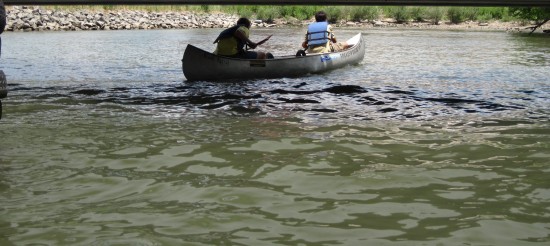
The Harlem River was once one of the city’s great playgrounds: colorful boathouses dotted its banks; riders on horseback promenaded and raced along the Manhattan shore; the bluffs above the river were home to an amusement park, as well as the Polo Grounds, which later became the home of the New York Giants, and, of course, to Yankee Stadium.
As the river was industrialized, though New Yorkers turned their backs on the Harlem. Now, with much of the industry gone, Bronxites hope to reclaim the river.
For years, organizations like Friends of Brook Park and the Bronx Council on Environmental Quality have looked at the Harlem and seen a necklace of green the length of the borough. A greenway would connect existing parks, like Mill Pond and Roberto Clemente, along with new parks built on unused land. Some of them would include fishing piers, places to launch kayaks and canoes, eco-classrooms and gardens.
Pie in the sky? Not really. To see the future, just look at the Bronx River. Not so long ago, it was an open sewer and garbage dump. Today, thanks to the hard work of volunteers whose efforts led to the formation of the Bronx River Alliance and the investment of millions of federal dollars, wildlife has returned, fish thrive, ospreys soar and egrets nest. People play in new parks, stroll and bicycle on the shore and canoe in the water.
Five years ago, Harry Bubbins of Friends of Brook Park urged the formation of a Harlem River Alliance, drawing on the experience of the Bronx River Alliance. Now the federal government has given advocates’ efforts a boost.
Last month, Secretary of the Interior Ken Salazar visited Roberto Clemente State Park to announce that the Harlem River would be one of a hundred projects nationwide aimed at restoring neglected rivers to the people who live near them. Rep. Jose Serrano, the chief benefactor of the Bronx River, who accompanied the secretary, pointed to the lessons of the Bronx River.
There are plenty of obstacles. Ways have to be found for a greenway to wind through or around a maze of industrial facilities. The city or state will have to seize junk yards. Thusfar, the state has not even been persuaded to designate the Harlem a sensitive area protected for recreation, turning down a request to do so from the Bronx Council on Environmental Quality in a blizzard of bureaucratic initials.
The city’s 2009 Lower Concourse rezoning, which envisions riverside promenades, has yet to attract the development that would yield them, and the boundaries of the newly-zoned area left out the southern end of Park Avenue, where Friends of Brook Park hopes to see a boat launch built.
But the pledge of federal assistance is a game-changer. The Bronx Council on Environmental Quality, which completed a comprehensive plan for a Harlem River Greenway from Highbridge to Spuyten Duyvil four years ago, has also formed a Harlem River Working Group, which has enlisted community organizations and parks groups the length of the river. Energized by Salazar’s visit, it envisions the Harlem Greenway joining the South Bronx Greenway at the bridge to Randalls Island, says its coordinator, Chauncy Young.
The effort to revive the Harlem River can bring jobs and economic development opportunities to the area, give Mott Haven residents a larger role in deciding how waterfront development will proceed once the economy improves and, above all, offer parks-starved Bronx communities a place where they can find beauty and ease at their doorstep.

Great piece, access the Harlem River